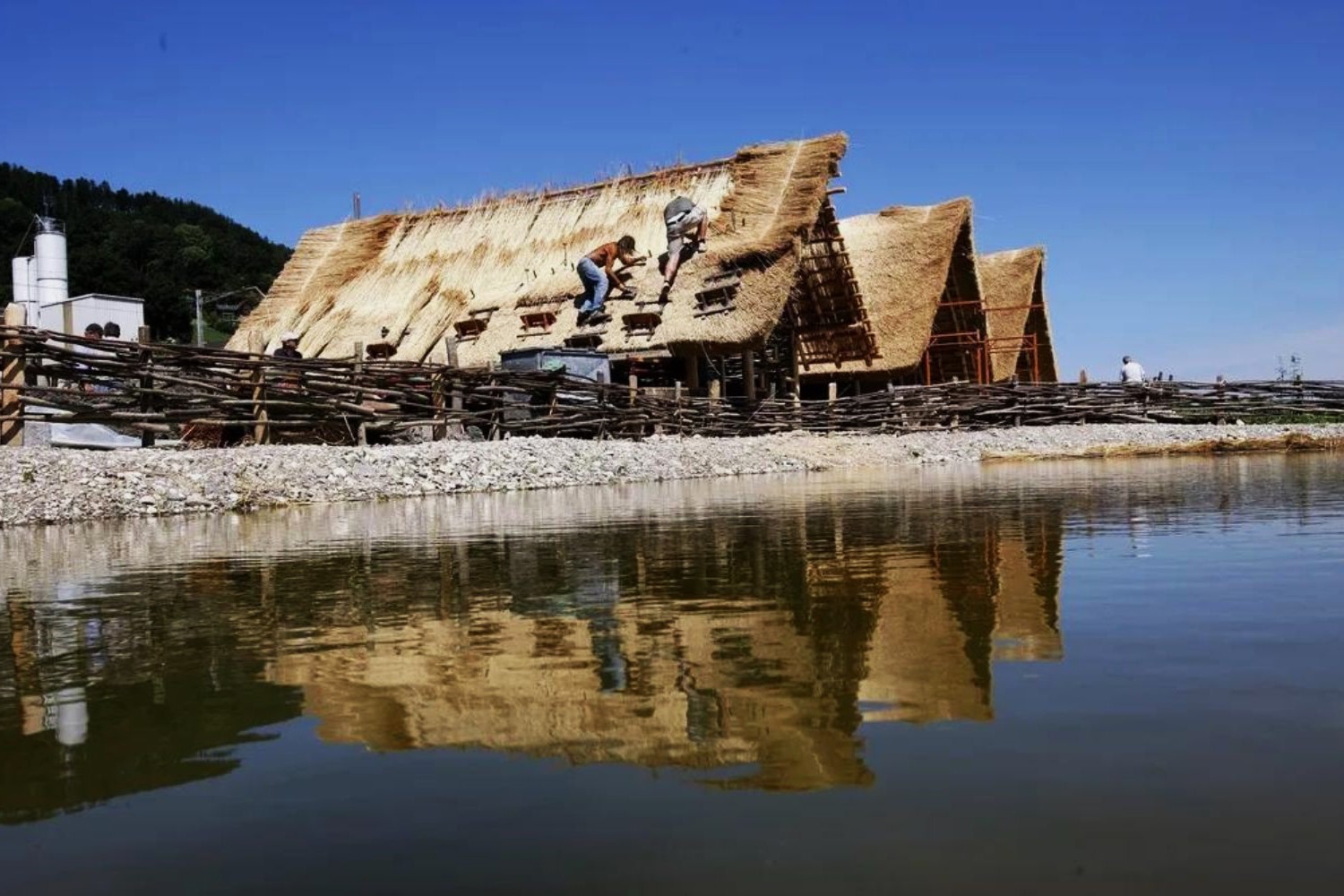
Ever heard of a village submerged underwater? Switzerland's sunken village, Resia, is a fascinating tale of history, nature, and human resilience. Nestled in the Alps, this village was intentionally flooded in 1950 to create a reservoir. Now, only the church tower peeks above the water, creating a surreal and hauntingly beautiful sight. This unique landmark has become a symbol of the past and a popular tourist attraction. Imagine walking on ice in winter to touch the tower or kayaking around it in summer. Dive into these 35 intriguing facts about Resia and uncover its hidden stories!
Key Takeaways:
- The Swiss sunken village of Graun, submerged beneath Lake Resia, had a rich history dating back to Roman times. It was a thriving community with a church and a close-knit population of around 150 people.
- Despite being submerged in 1950 due to a dam project, the iconic bell tower of Graun still stands tall above the water, attracting tourists and serving as a haunting reminder of the village's tragic fate.
The Enigmatic Swiss Sunken Village
Switzerland is known for its stunning landscapes, but hidden beneath one of its lakes lies a village with a fascinating story. This sunken village has captured the imagination of many. Let's dive into some intriguing facts about this submerged wonder.
The Village's Origins
Before it was submerged, this village had a rich history and vibrant community life.
- The village was called Graun. Located in the South Tyrol region, Graun was a picturesque settlement with a thriving community.
- It dates back to Roman times. Historical records suggest that Graun has been around since the Roman Empire.
- The village had a population of around 150 people. Before its submersion, Graun was home to a small but close-knit community.
- Agriculture was the main livelihood. The villagers primarily engaged in farming and livestock rearing.
- It had a church with a distinctive bell tower. The church of St. Catherine was a central feature of the village.
The Submersion
The story of how Graun ended up underwater is both tragic and fascinating.
- The village was submerged in 1950. A dam project led to the flooding of Graun, submerging it beneath Lake Resia.
- The dam was built to generate hydroelectric power. The need for renewable energy led to the decision to flood the village.
- Residents were forced to relocate. The villagers had to abandon their homes and move to higher ground.
- Compensation was provided. The government offered financial compensation to the displaced residents.
- The bell tower remains visible. The church's bell tower still protrudes from the lake, serving as a haunting reminder of the submerged village.
The Bell Tower
The bell tower of Graun has become an iconic symbol and a tourist attraction.
- The bell tower is 14 meters high. It stands tall above the water, visible from a distance.
- It dates back to the 14th century. The tower is a historical relic from medieval times.
- The bells were removed before the flooding. To preserve them, the bells were taken out before the village was submerged.
- It is a popular photography spot. Tourists flock to Lake Resia to capture the eerie beauty of the bell tower.
- The tower is illuminated at night. Special lighting enhances its mystical appearance after dark.
The Lake Resia
Lake Resia, where the village lies submerged, has its own set of interesting facts.
- Lake Resia is an artificial lake. It was created by the dam project that submerged Graun.
- It covers an area of 6.6 square kilometers. The lake is quite expansive, offering stunning views.
- The lake is 45 meters deep. At its deepest point, the lake reaches a depth of 45 meters.
- It is a popular spot for water sports. Activities like windsurfing, sailing, and fishing are common on the lake.
- The lake freezes in winter. During the colder months, the lake's surface turns into a natural ice rink.
The Cultural Impact
The story of the sunken village has left a lasting impact on the region's culture and folklore.
- It inspired a novel. The story of Graun was the basis for the novel "The Sunken Village" by Marco Balzano.
- Local legends abound. Many tales and legends have sprung up around the submerged village.
- It is featured in documentaries. Several documentaries have explored the history and mystery of Graun.
- Annual commemorations are held. The local community holds events to remember the village and its history.
- It has influenced local art. Artists in the region often draw inspiration from the story of the sunken village.
The Modern-Day Village
The descendants of the original villagers have built a new community nearby.
- A new village was established. The displaced residents founded a new village called Curon Venosta.
- It is located on higher ground. The new village is situated safely above the water level.
- The community remains close-knit. The descendants of the original villagers maintain strong ties.
- Tourism is a key industry. The story of the sunken village attracts many visitors, boosting the local economy.
- Modern amenities are available. The new village has all the conveniences of modern life.
The Future of the Sunken Village
What lies ahead for this fascinating underwater relic?
- Plans for preservation. Efforts are underway to preserve the bell tower and other remnants of the village.
- Potential for underwater exploration. There are discussions about allowing divers to explore the submerged village.
- Increased tourism. The story of Graun continues to attract more tourists each year.
- Educational programs. Schools in the region teach students about the history of the sunken village.
- Ongoing research. Historians and archaeologists continue to study the village and its history.
The Final Word on Swiss Sunken Village
The Swiss Sunken Village holds a unique place in history. Submerged in 1950 to create a reservoir, this village has fascinated many. The church tower peeking out of the water is a haunting reminder of the past. This site has become a popular spot for tourists and photographers alike.
The village's story is a testament to human resilience and adaptation. Despite the loss, the community found ways to move forward. Today, the sunken village serves as a symbol of both tragedy and beauty.
Whether you're a history buff or just curious, this place offers a glimpse into a different era. The Swiss Sunken Village is more than just a submerged town; it's a piece of living history. So, next time you're in Switzerland, consider visiting this intriguing site. You'll leave with a deeper appreciation for the stories hidden beneath the surface.
Frequently Asked Questions
Was this page helpful?
Our commitment to delivering trustworthy and engaging content is at the heart of what we do. Each fact on our site is contributed by real users like you, bringing a wealth of diverse insights and information. To ensure the highest standards of accuracy and reliability, our dedicated editors meticulously review each submission. This process guarantees that the facts we share are not only fascinating but also credible. Trust in our commitment to quality and authenticity as you explore and learn with us.


